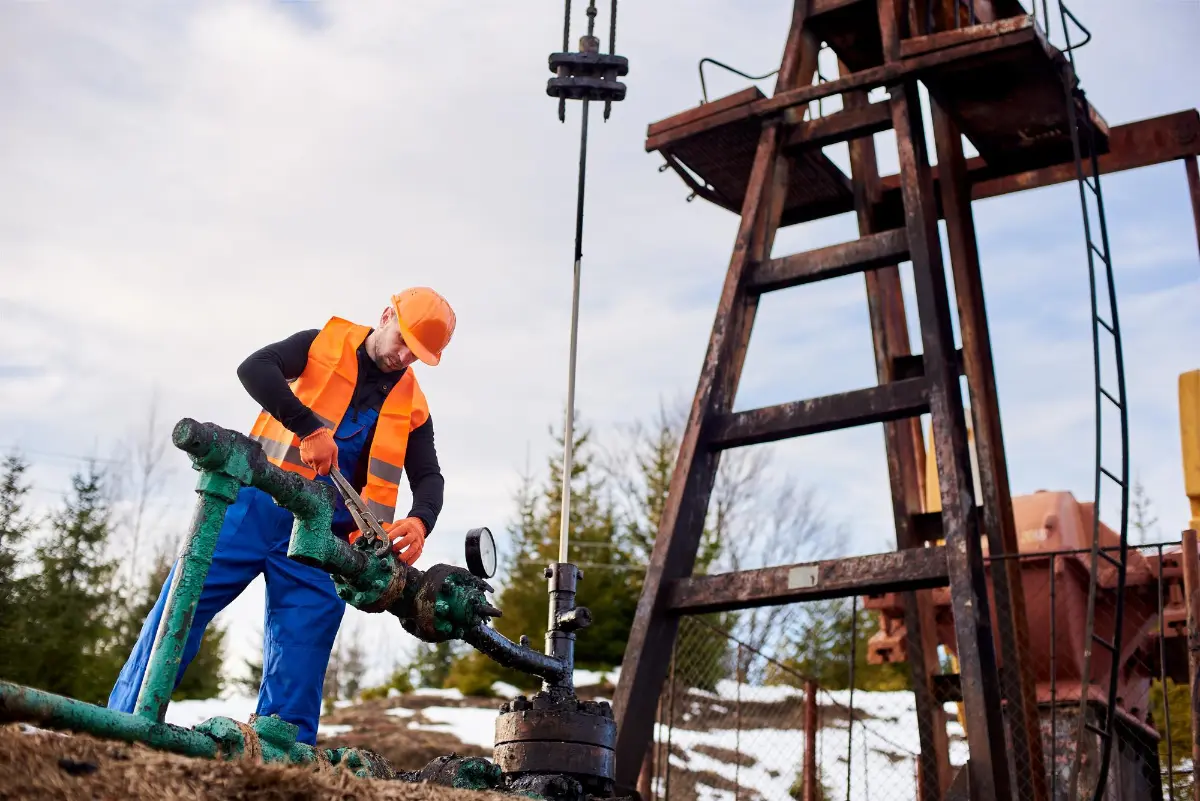As industries continue to evolve, mining and energy operations face the challenge of finding innovative ways to streamline their processes and maximize efficiency. In today’s digital age, technology has become a game-changer, and one such advancement that is revolutionizing the mining and energy sector is the integration of maps, scheduling, and work orders. This powerful trio is transforming the way these industries operate, unlocking immense value and optimizing operations like never before.
Streamlining Mining and Energy Operations with Maps, Scheduling, and Work Orders
The integration of maps, scheduling, and work orders is driving a workflow revolution in the mining and energy sector. Gone are the days of relying solely on manual processes, spreadsheets, and outdated systems. This new approach empowers companies to visualize their operations, effectively plan their activities, and efficiently allocate resources.
Maps play a crucial role in providing a panoramic view of mines, oil fields, and energy infrastructure. With advanced mapping technology, industry professionals can identify potential hazards, plan optimal routes, and visualize extraction areas. Map-based planning enables proactive decision-making, leading to improved resource utilization and enhanced safety protocols.
Furthermore, the integration of scheduling and work orders enhances coordination and communication within mining and energy operations. By centralizing scheduling and work order management systems, teams can better allocate resources, track progress in real-time, and ensuring tasks are completed on time. This comprehensive approach to workflow management minimizes downtime, boosts productivity, and ultimately maximizes profitability.

Unlocking Value: The Benefits of Adopting Maps, Scheduling, and Work Orders
The adoption of maps, scheduling, and work orders brings with it a myriad of benefits for mining and energy companies. By leveraging cutting-edge technology, these industries can unlock substantial value and improve their overall performance.
One significant advantage lies in the optimization of resource allocation. Efficiently scheduling personnel, equipment, and vehicles ensures that operations run smoothly, reducing unnecessary downtime and costly delays. The result is improved productivity, reduced costs, and increased profitability.
Moreover, accurate mapping and visualization enable companies to identify areas of improvement and potential bottlenecks within their operations. By analyzing data and studying processes, mining and energy businesses can develop smarter strategies, streamline workflows, and eliminate inefficiencies. This data-driven approach fosters continuous improvement and long-term sustainability in a rapidly evolving industry.
Another crucial benefit of adopting maps, scheduling, and work orders is enhanced safety. The ability to identify potential hazards, plan safer routes, and track personnel in real-time minimizes risks and promotes a secure working environment. Prioritizing employee well-being is not only morally admirable but also financially prudent, as it minimizes workplace accidents and reduces insurance claims.
The Power of Data: Leveraging Maps, Scheduling, and Work Orders to Optimize Operations
In today’s digital age, data is the driving force behind decision-making and optimization. Maps, scheduling, and work orders collect vast amounts of valuable data that can be analyzed and utilized to enhance mining and energy operations.
By combining mapping technology with real-time data collection, companies can gain valuable insights into their processes. They can track the movement of personnel and equipment, monitor fuel consumption, and analyze historical trends. This data-driven approach enables proactive decision-making, allowing companies to identify areas for improvement and adjust operations accordingly.
Furthermore, the integration of scheduling and work orders allows for seamless data flow between teams and departments. With a centralized system, different stakeholders can access real-time information, collaborate effectively, and make informed decisions. This holistic approach to data management fosters a culture of agility, adaptability, and continuous improvement, driving mining and energy operations to new heights.
Optimization in Action: How Maps, Scheduling, and Work Orders are Changing the Mining and Energy Landscape
The integration of maps, scheduling, and work orders is reshaping the mining and energy landscape, empowering companies to transform their operations and stay competitive in an ever-evolving industry.
One real-life example of this transformation can be seen in NRG Mining, a global leader in the energy sector. By adopting mapping technology and optimizing their scheduling and work order management, NRG Mining witnessed a drastic improvement in their overall efficiency. Downtime was reduced by 25%, operational costs were slashed by 15%, and safety incidents were minimized, resulting in a 10% decrease in insurance claims.
The success story of NRG Mining is not an isolated case. Companies across the globe are experiencing similar benefits by embracing maps, scheduling, and work orders. As the world embraces digital transformation, these tools have become essential in staying ahead of the curve, driving efficiency, and optimizing mining and energy operations.

AI-Driven Transformation: The Impact of Maps, Scheduling, and Work Orders
The future of mining and energy operations holds even more promise with the integration of artificial intelligence (AI). Advances in AI technology are taking the integration of maps, scheduling, and work orders to new heights, unlocking unprecedented possibilities.
AI-powered algorithms can analyze vast amounts of data and generate actionable insights. By combining historical data, real-time monitoring, and predictive analytics, companies can optimize their operations like never before. AI-driven solutions can automatically schedule work orders, anticipate maintenance needs, and identify potential risks, all while considering factors such as weather conditions and resource availability.
Embracing AI-driven transformation allows mining and energy companies to take a proactive approach to their operations. By leveraging the power of AI, they can predict and prevent equipment failure, identify opportunities for cost-saving measures, and optimize resource allocation in real-time. This forward-thinking approach ensures that mining and energy operations remain agile, resilient, and future-proof in an ever-changing industry.
Embrace the Power of Transformation
The integration of maps, scheduling, and work orders is revolutionizing mining and energy operations, paving the way for a new era of efficiency, safety, and profitability. As industries evolve, embracing innovative technologies becomes imperative, and mining and energy companies have found their solution in this powerful trio. By unlocking the value of maps, scheduling, and work orders, these industries can optimize their operations, leverage the power of data, and stay ahead of the curve.
Embrace this transformation and unlock the full potential of your mining and energy operations. Embrace the power of maps, scheduling, and work orders, and embark on a journey of continuous improvement, innovation, and success.
